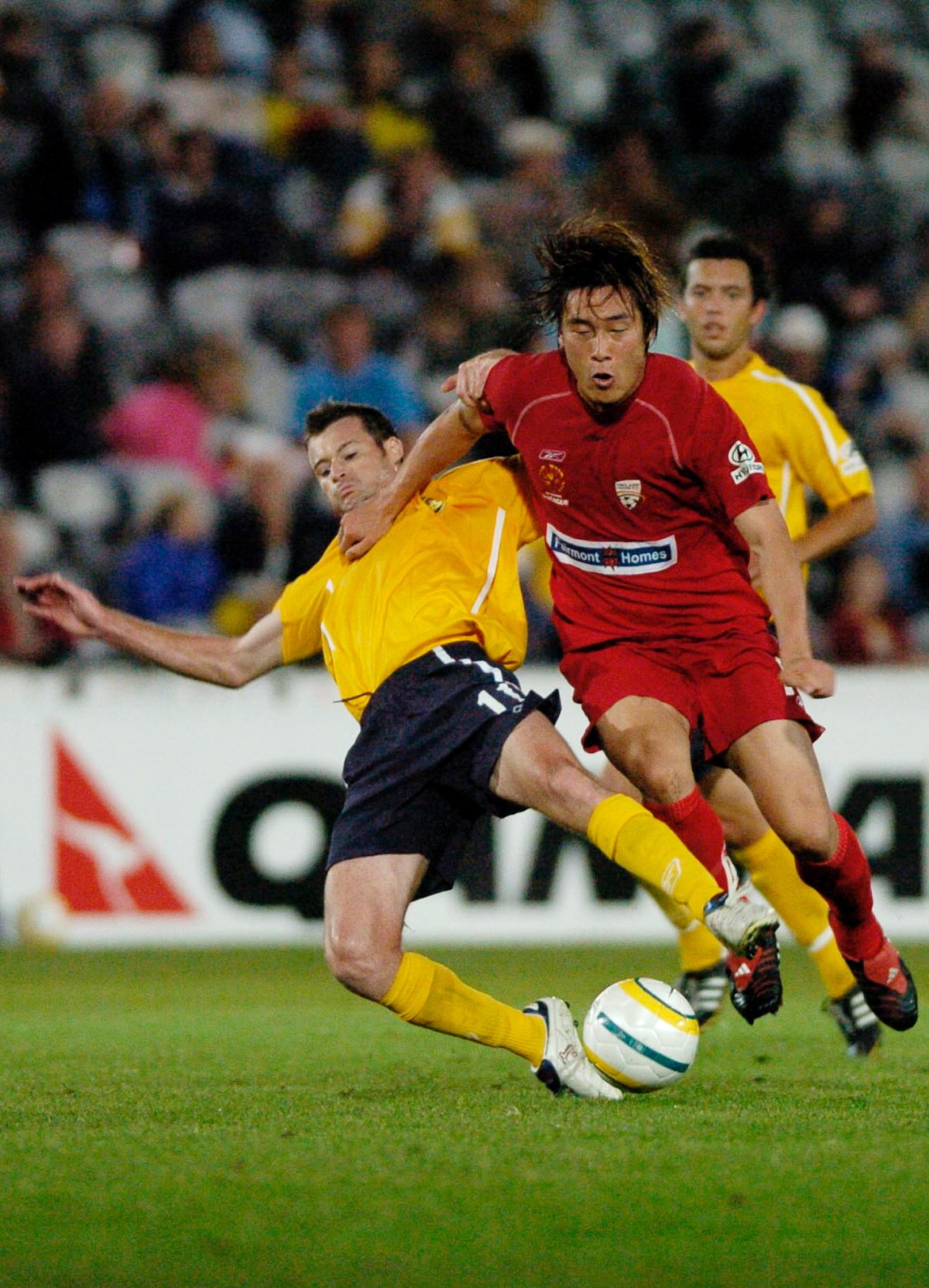Should Australia consider going back to Oceania? No, no, no.
Planned changes to World Cup qualification have prompted renewed speculation about Australia’s future in the Asian Football Confederation. But, Paul Marcuccitti insists, the move to Asia was never merely about World Cup qualification – and its benefits go far beyond that.

Mile Jedinak celebrates with fans after his Socceroos won the 2015 AFC Asian Cup - a success for Australia both on and off the field. Photo: Quentin Jones / AP
“It was my first trip to China, and the following day we headed out to the Beijing Workers’ Stadium for the game.
“Without being overly dramatic, it proved to be my ‘Road to Damascus’ moment. Here I was, just a few months into the job as we embarked on a restoration project for the game in Australia, and the future was all around me.
“There was a massive crowd there for the game. What really struck me, however, were the faces in the VIP box. There must have been 200 people there and they were representative of so many colours, races and religions.
“Why would we be out of place? It was truly the world game.
“The tournament itself was massive, too. The top 16 nations in Asia were involved and it was an enormous celebration. I sat there thinking about the Nations Cup debacle in Adelaide and how it could never hope to compare. The quality of football was clearly superior to what we confronted in Oceania.
“The thought came to my mind: This is us.”
Those are the words of John O’Neill and can be found in It’s Only A Game, his 2007 book about his life as a sports administrator.
What he’s describing, if not already obvious, is his experience at a match of the 2004 Asian Cup, which was held shortly after 15 Oceania Nations Cup games were played in front of empty seats at Hindmarsh Stadium… and Marden Sports Complex.
History might have been a little different if the two tournaments hadn’t both been scheduled in mid 2004.
The contrast rocked O’Neill, then the new CEO of the Australian Soccer Association (now Football Federation Australia), who had never attended a senior game of soccer before that year.
One of the great myths that has developed since Australia left the Oceania Football Confederation to join Asia is that the move was all about making the Socceroos’ World Cup qualification path easier (because it means we can reach the finals by finishing in Asia’s top four rather than the arrangement whereby we had to face a team from another confederation in a sudden death playoff).
This may have been the main motivation of others who had pursued the dream but O’Neill was not an heir to their legacy.
Having just come to soccer from rugby, the years of discussion – and formal attempts – aimed at bringing Australia into the Asian Football Confederation were not something he’d lived and breathed.
He immediately saw reasons for joining Asia that had little to do with reaching the World Cup finals: participating in the immeasurably better Asian Cup; giving the often-dormant Socceroos (who played just three matches in 2003 and did not play in Australia between November 2001 and May 2004) regular meaningful fixtures through qualifying; and quality competition at club level.
More than a decade later, these benefits remain. With interest.
One of the great myths that has developed since Australia left Oceania is that the move was all about making the Socceroos’ World Cup qualification path easier
Exactly two years ago the Asian Cup was being played in Australia. Its average attendance was above 20,000 per match (a lot higher than anticipated), the tournament made a $22 million profit and achieved a high television viewership overseas.
The Asian Champions League, once seen as a financial burden, has increased its prizemoney dramatically in recent years.
Asia is also a strong region for women’s soccer, so the Matildas also play in an excellent regional championship; they won it in 2010 and were runners-up in 2014.
So we’re all counting our blessings, right?
Apparently not.
Despite the commercial benefits they can provide (by providing access to markets in their usually large home nations), and that they can be included to give teams an extra overseas player in the ACL, the A-League currently contains only two Asian players.
Last week Adelaide United chairman Greg Griffin effectively backed the status quo when he criticised a decision by FFA to introduce the “4+1” rule for the 2018-19 A-League season (which means that, from then, clubs will only be allowed to have five visa players if at least one of them is from an Asian Football Confederation member country).

Chinese international Shengqing Qu was a crowd favourite in Adelaide in 2005-06. Photo: Dean Lewins / AAP
And the recent decision to expand the 2026 FIFA World Cup to 48 teams, with the likely inclusion of a spot for the Oceania Confederation, raised a question I never thought I’d hear: Should Australia consider going back to Oceania?
That was formally asked by veteran soccer journalist Mike Cockerill (who, from memory, broke the story that Australia was on the verge of joining the Asian Confederation in March 2005).
Given the dubious arguments in Cockerill’s column, I suspect it’s satirical. Either that or some sort of Stockholm syndrome that he was suffering when Australia was stuck in Oceania has inexplicably resurfaced.
I do understand why Griffin and other A-League club bosses object.
The imperfect global soccer market means that a chap in the Spanish second division, who has similar ability to a player in the Korean league, is likely to be paid a lot less – a result of both the increasing money in top Asian competitions (and their visa player limit) and the struggling economies of Europe.
Hence there was a time, not that long ago, when our five visa player limit (as opposed to the 4+1 rule) didn’t matter too much. Several clubs were signing Asians anyway.
But, as mentioned, there is an upside for Australian clubs competing in Asian competition. The ACL, like most of the confederation’s leagues, has a 3+1 rule. It means that A-League clubs with five visa players have to omit two (Adelaide United did this last year and are probably in the process of deciding which foreign players they’ll cut for the 2017 campaign).
I’m sure I’m not the only fan who finds this a little frustrating. You want the squad that you’re used to seeing every week playing in Asia, not a reduced version. A move to 4+1 would soften that blow.
And the right Asian player can be found. It could be a young up-and-comer who isn’t yet a top earner, or one who’s looking to challenge himself elsewhere and might accept a little less money, or there is always the possibility of bringing over a star and using a marquee spot so the salary sits outside the cap.
FFA has given clubs plenty of time to adjust. The new rule – if not reversed by a final review next year – won’t kick in until the beginning of the season after next.
I look forward to it. Because really, the question isn’t whether or not we’re in Asia. The question is: Are we fully embracing our region?
And the answer should be a resounding Yes.
Paul Marcuccitti is a co-presenter of 5RTI’s Soccer on 531 program which can be heard from 10am on Saturdays.




